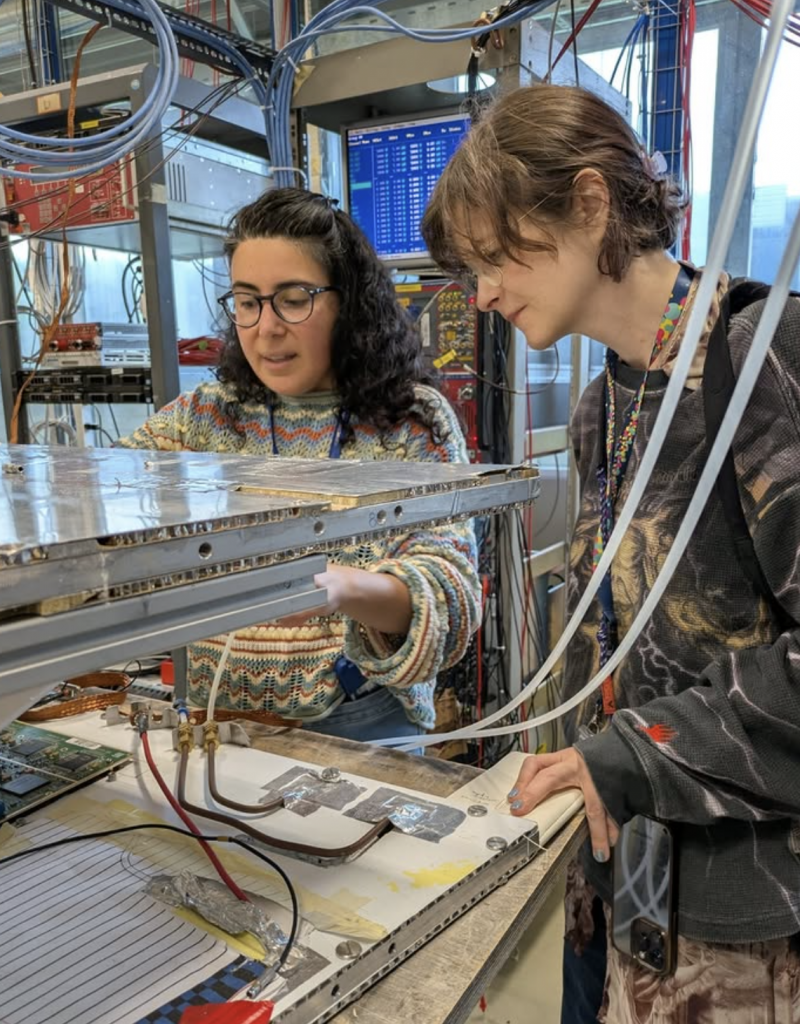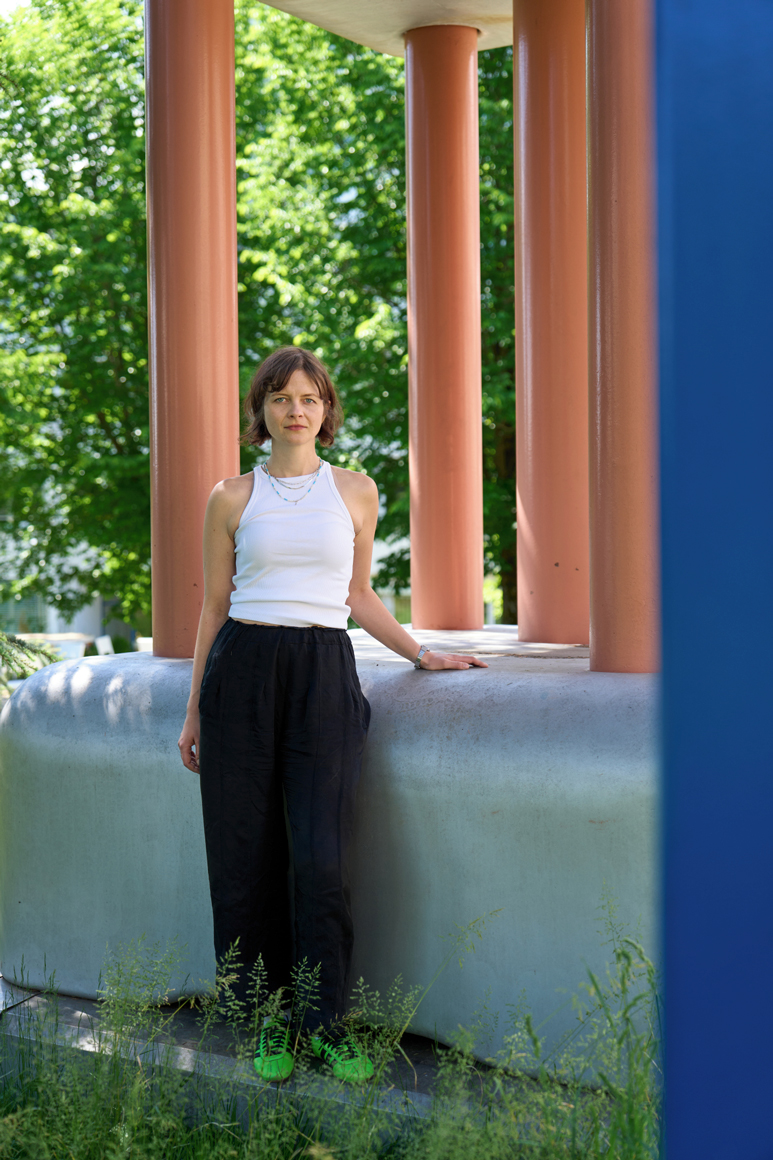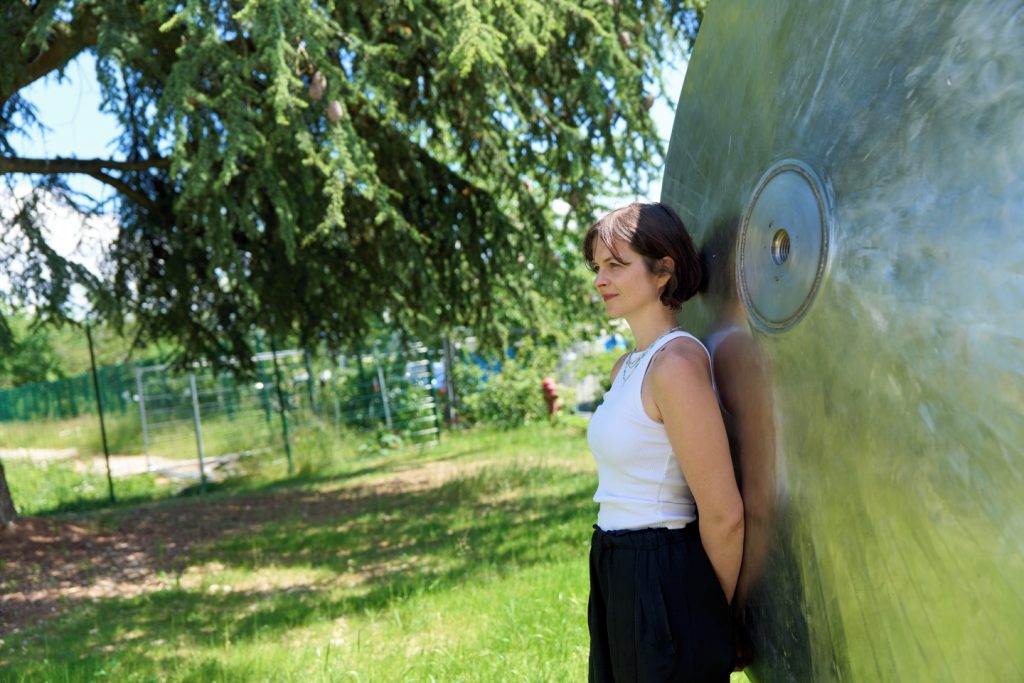- Author
- Martyna Marciniak

Following her residency at CERN, the artist discusses her project 2.2 microseconds: an anomaly, exploring split-second errors, the nature of time, and how uncertainty enables knowledge
My practice focuses on how different forms of representation influence and reinforce perceptual biases. Through forensic research and artistic works, I explore lapses in visual evidence and their emerging uncertainties. Increasingly, my work questions how aesthetics and perception mediate the influence of authorities, and how power circulates through material infrastructures and media.
These interests in biases, media lapses, anomalies, and the limits of processing and interpreting acquired data led me to the Arts at CERN’s Collide residency, in partnership with Copenhagen Contemporary. My project 2.2 microseconds: an anomaly primarily focuses on single event upsets: soft and critical errors that occur in subliminal timeframes, in particular, those caused by muon bit-flips.

The short lifespan of a muon becomes a conceptual anchor to explore time relativity and conceptualise time as emergent, relational or probabilistic
Muons are unstable fundamental particles that originate when cosmic rays strike molecules in the atmosphere. They decay into an electron and two neutrinos in about 2.2 microseconds. Through their fleeting nature, they constantly permeate our environment and can disrupt electronic systems. These may cause seemingly minor glitches, such as blue screens or brief flashes, but also critical failures, including anomalous election results and aircraft malfunctions reported in the early 2000s.
The short lifespan of a muon, relative to the human temporal frame, becomes a conceptual anchor to explore time relativity and how different fields, from experimental high-energy physics to quantum theories, conceptualise time as emergent, relational or probabilistic. The muon bit flip, as a split-second disruption, prompts the inquiry into the impact of events that elude human temporal frameworks. The anomaly, the event upset, the error, becomes a way to interrogate otherwise opaque systems, such as automated bureaucracy, governmental regulation and high-frequency trading.
At CERN, I examined how experimental physics addresses the sources of errors and lapses
I worked closely with ATLAS and CMS physicists and engineers involved in data acquisition, triggering systems, and muon detection technologies such as the Gas Electron Multiplier lab. I also researched synchronisation technologies like White Rabbit, which coordinates sub-nanosecond accuracy across distributed systems. My focus was on how these architectures process the immense volumes of data generated by collisions at the Large Hadron Collider at sub-second intervals. Furthermore, these encounters opened questions around the ‘materiality of time’, the sites where temporal latencies materialise.
At the Antimatter Factory and the CMS detector, I encountered the delicate and intricate interplay between scale, measurement precision, and resolution. Observing the data management strategies at the Data Centre, particularly the built-in redundancies and acceptance of certain error thresholds, expanded my interest in error prediction, detection, and control.
Exploring muon tomography and neutrino detectors further revealed how the scale of an apparatus affects the probability of observation
Unexpected encounters during the residency have also entered the project’s orbit: CERN’s organisational architectures, intergenerational knowledge transfer, and the legacy of the ‘scanner girls’, women who manually processed data from early particle detectors, are shaping the fictional narrative within the work.
The installation will materialise into sculptural elements and a video piece. The sculptures will range in complexity and function: the error-attractors will provoke malfunctions in familiar devices, correlating probability with computational speed and scale; the time-pieces will explore the materiality of subliminal temporalities and different conceptualisations of time; and the votives will embody the dilemmas of risk and error management embedded in systemic design.
These devices will be animated in the accompanying video piece, which is framed around the concept of bureaucratic mysticism: an anomaly-driven system of questioning the trust in the infrastructures of governance, bureaucracy and market control. The video will simultaneously challenge viewers’ perception of time, error and probabilities.




